OXO Good Tips Blogs: Cooking & Baking
Grilling for Beginners: Everything You Need to Know
Get ready to grill with these useful tips.
OXO Good Tips Blog | 28th May 2024
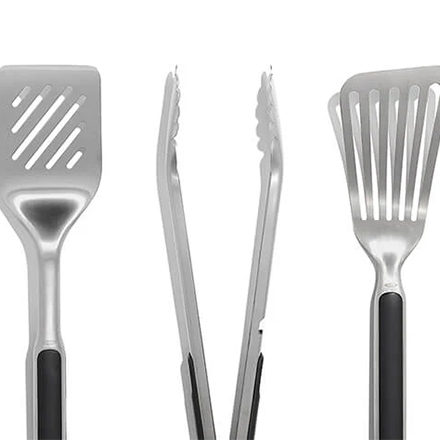
Know what’s great about grilling? Everything! Grilled food tastes so good because the high temperatures break down the proteins and amino acids in your ingredients, which results in those smoky flavors and caramelized textures. Grilling is also a healthy cooking method because it doesn’t require added fat. And of course, grilling season means backyard parties and cookouts with friends and family.
Don’t know how to grill? Don’t worry! These simple tips will help you choose your grilling equipment, prep for a barbecue, and learn how to grill like a pro.
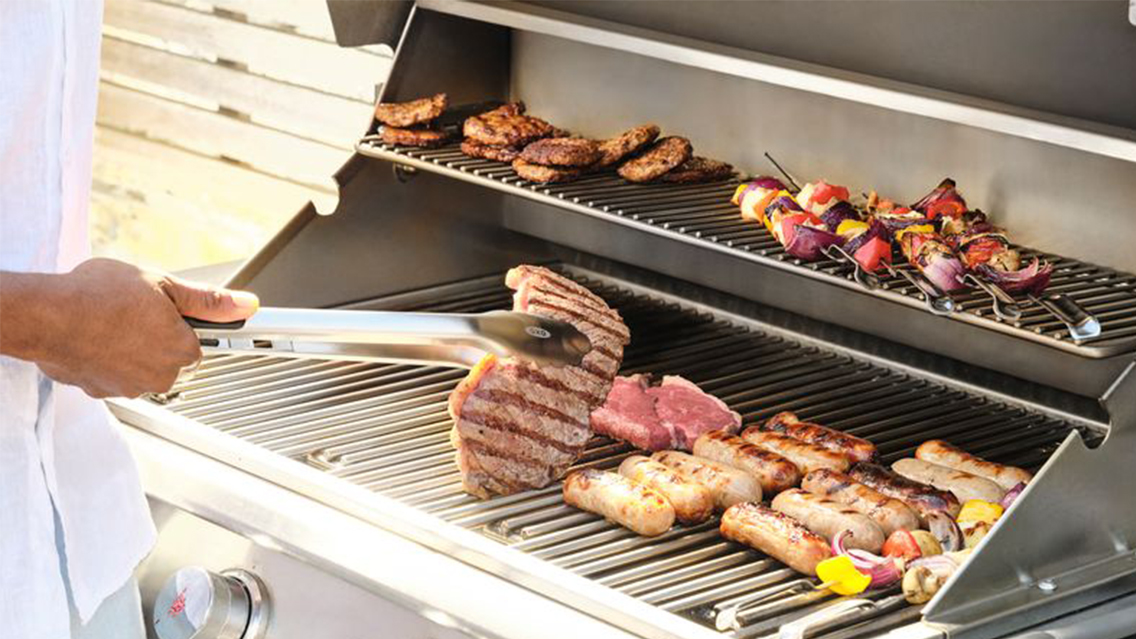
Understand Gas vs. Electric Grills
Let’s start by identifying the most popular varieties of grills, so you can better understand how each type functions and what kinds of grilling it can do best.
Getting Started with Gas Grills
Gas grills are generally considered the easiest to use. There’s no waiting around for charcoal briquettes or kindling to catch fire—just turn the knob and you’re on your way. They also require fewer components. All you need is fuel (usually propane), which can be picked up at many outdoor stores and most gas stations. Finally, gas grills make it easy to control the temperature, so you can increase it quickly when you really want to crank up the heat.
Getting Started with Electric Grills
Electric grills use powerful electric heating elements to cook food at high temperatures. These grills are often smaller and some models can even be used indoors. Although they heat up quickly, they don’t deliver the same robust flavor as a charcoal grill.
Getting Started with Charcoal Grills
Charcoal grills cook food over briquettes, which not only bring the heat but can also add that unmistakable smoky flavor. Briquettes usually take about 10 minutes to get to a high temperature and about 20 minutes to get to a more even, medium temperature, which is the most suitable for cooking a variety of foods.
Getting Started with Ceramic or “Egg” Grills
These beauties also cook with charcoal briquettes or wood, but their unique egg-shaped design and ceramic construction produces and retains substantially more heat. Plus their customized accessories (such as ceramic baking stones, steel woks and cast iron skillets) enable them to function like an extremely hot oven that turns out everything from easy grilled pizzas to paellas and even cakes. These grills also let you smoke and slow-cook your ingredients.
If you’re shopping for a new grill, evaluate how and where you like to cook before buying. Like to fire up the grill on a whim? Then a gas grill might be the best option for you because it’s quick to heat and doesn’t require a lot of prep. But if you want your burgers and steaks to get that signature smoky flavor and traditional grill marks on the surface, then a charcoal grill or an “egg” grill might be a better option for you.
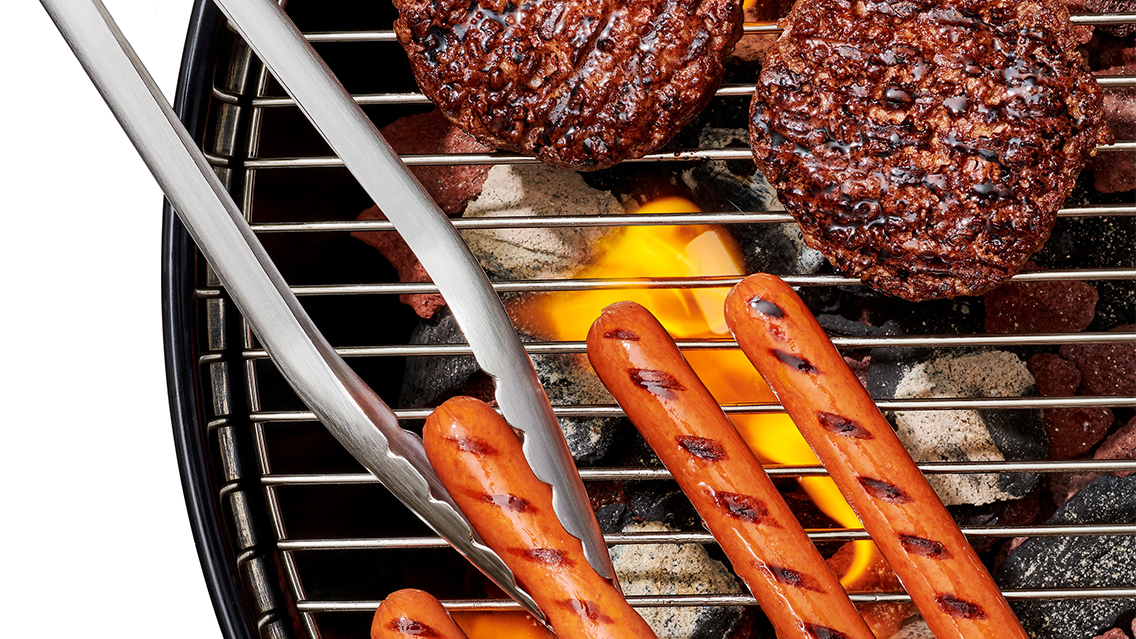
Choosing Your Grill Tools
Proper equipment is an essential ingredient when learning how to grill. Unlike kitchen utensils, grilling tools have longer handles and protective grips that are intended to keep you safe by distancing you from the heat. They also make it easier to handle foods as they’re cooking quickly. Your list of must-have grill tools should include:
- Sturdy stainless steel tongs. Bonus: These have a built-in bottle opener.
- A grilling turner for flipping burgers or taking off finished steaks with control.
- A precision turner for maximum flexibility when flipping delicate ingredients like fish.
- Metal skewers with a wide handle for fumble-free flipping and pointy enough to spear food.
- A wire brush for cleaning remnants of food and residue off the grill surface.
- A thermometer to check the ideal internal temperature of meats and fish. (If you’re aiming for a medium steak, 135℉ is your ideal internal temperature. Ground beef should be closer to 165℉. For chicken, the internal temperature should hit 165℉.)
- An extra squeeze-bottle and brush set so you can add your favourite sauce as you cook.
How to Start Your Grill
This is where the fun really begins.
For a Gas or Electric Grill
Ignite it or switch it to ‘on’ then let the unit heat up thoroughly, which will typically take around five minutes.
For a Charcoal or Egg Grill
- Empty the bottom of the kettle of any remaining ash and refill it with new briquettes.
- Ease some kindling (store-bought wood sticks or balled-up sheets of newspaper) between the briquettes. You might want to douse them with a bit of lighter fluid first.
- Light with a long match or lighter, and check that the fire spreads to the briquettes.
- Put your grate or griddle back in place. At first, the briquettes will flare up and smoke. As soon as they get to the point where they’re glowing and smoldering evenly—usually about 20 minutes—you’re ready to grill.
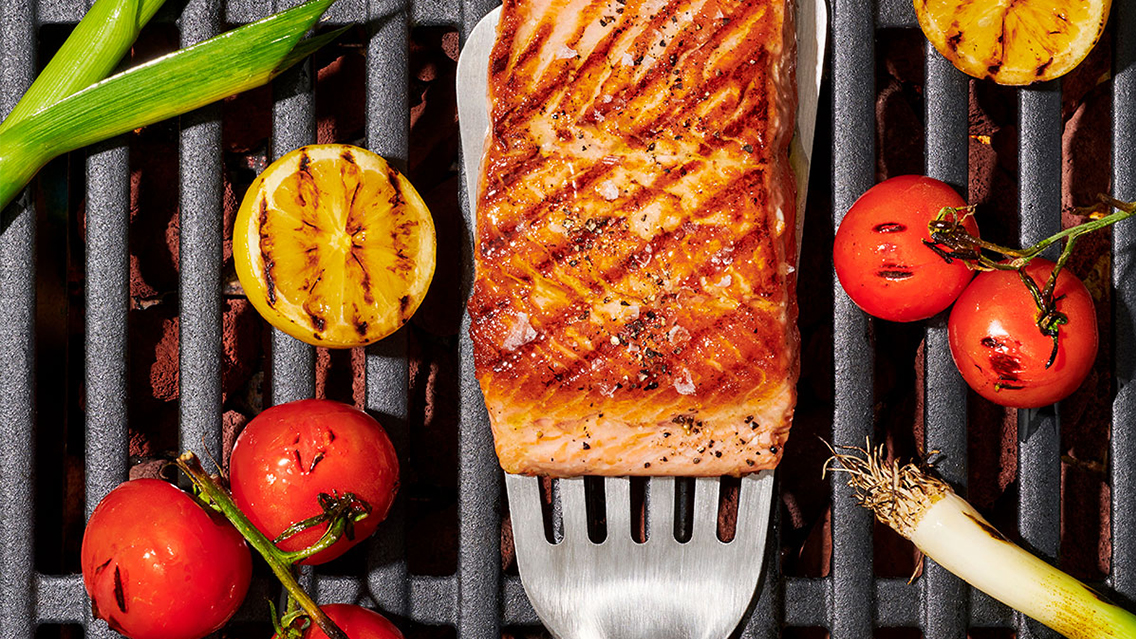
Cleaning and Seasoning Your Grill
While a thorough clean-up should happen after cooking (more on that in a minute), it’s also important to start with a clean cooking surface, which allows foods to come into better contact with the grill’s heat, To clean your grill:
- Scrape any charred remnants of food off the grill grate with a wire brush.
- Wipe down the grate or griddle surface and inside of the lid with a damp cloth.
- Grab a bottle of oil that has a high smoke point (such as avocado or canola oil) and spread just enough over the surface so that it’s glistening, but not so much that the oil drips onto your heat source.
Seasoning a grill, or the process of oiling and heating the grates or surface so that oil penetrates the pores of the metal, helps to form a protective coating that keeps food from sticking. To season your grill:
- Drizzle oil with a high smoke point (canola or peanut oil) onto a folded paper towel.
- Rub the oil on the surfaces that come into contact with food.
- Heat up your grill to its top temperature. If you’re using a gas grill, leave it on for about 30 minutes, then turn off the gas and let the grates cool. If you have a charcoal or egg grill, let the oil coating burn off until the fire has gone out, then allow the grates to cool.
- Wipe away any excess oil or residue when the equipment has cooled down enough to touch.
Grilling Tips and Tricks
Things can move lightning-fast once your grill is at the right temperature, so follow these easy steps to for grilling success:
Set up Your Grilling Station in Advance
Mise en place, or ensuring that your equipment is organized and ready, is key. You’ll also want to make sure the area around your grill is clear of clutter and that you’ve thought through any items you might need, such as additional cooking oil, seasonings, cutting boards and serving platters.
Plan What to Cook When
Since thicker ingredients, such as burgers or hefty steaks, take longer to cook, it’s best to use a two-zone grilling technique. Start by placing heftier items on the prepared, preheated grill directly over the heat source, which is the primary or hottest zone. Once those bulkier items are almost done, move them to the secondary zone at the back of the grill or to the upper grill shelf, where they can stay warm over the indirect heat but won’t continue to cook as quickly.
Don’t Move The Food Around
Developing that caramelized outer layer takes time, so leave your ingredients alone as much as possible once you’ve placed them on the cooking surface. That way, they’ll be adequately exposed to the heat and cook more evenly.
Let Food Rest
Meats taste better when they’ve been given a few minutes to rest after cooking. It allows the juices and fats to be redistributed throughout the meat, which improves the texture and taste.
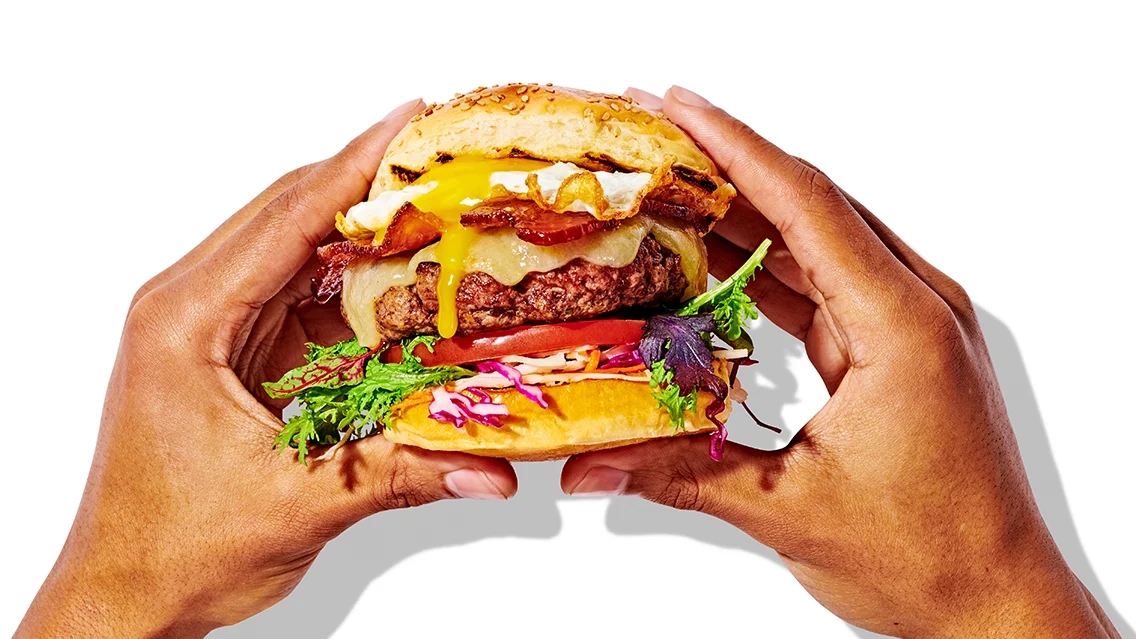
Cleaning a Grill After Cooking
After cooking, it’s essential to clean the grill so that the remnants of food don’t harden on the cooking surfaces, and the drippings or oils don’t coagulate.
For a Charcoal or Egg Grill:
- Scoop out any leftover ashes.
- Remove the grate or griddle and stand it up in a large bucket or trash can.
- Scrub it down with a rough sponge or a ball of aluminum foil along with soapy water.
- Hose down the grate or griddle, or rinse it with a bucket of clean water.
- Use dish soap to clean the kettle before rinsing it well.
For a Gas Grill:
- Disconnect the grill from the gas source.
- Wipe down the inside of the lid with a damp rag.
- Wipe down the grill components inside and any other areas onto which fat or grease might have dripped.
Our Favorite Grilling Recipes:
So what’s it going to be? An array of barbecue classics, like meats prepared with dry rub or marinade? Or maybe some creative grilled side dishes? Backyard barbecues are kid-friendly and can appeal to every kind of eater (vegetarian, vegan, gluten-free), too. So here are some of our favorite foods to grill:
Chicken
For truly juicy, flavorful chicken breasts, tenderize the chicken with a meat tenderizer first so that the breasts are uniformly thick and can cook more evenly. Next, marinate them in a covered baking dish or bowl for at least 20 minutes but not longer than an hour (or the texture of the meat can turn mushy, as acids start breaking down the proteins).
Marinades can be simple (olive oil, lemon juice, salt and pepper), or you can make a more complex marinade by mixing together a few tablespoons of sesame oil, soy sauce and honey with about a teaspoon of grated ginger.
Burgers
To get thick and juicy grilled burgers with those gorgeous grill lines, form your beef into patties that are about 1 inch thick. Then use your thumb to make an indentation on the top of each patty, to help the burger retain its shape and shrink ever so slightly inward rather than swelling on the grill. Experts caution against pushing down on the burgers while they’re cooking (since that tends to force out the flavorful juices). Grill them for about 3 minutes per side, turning the patties over only once.
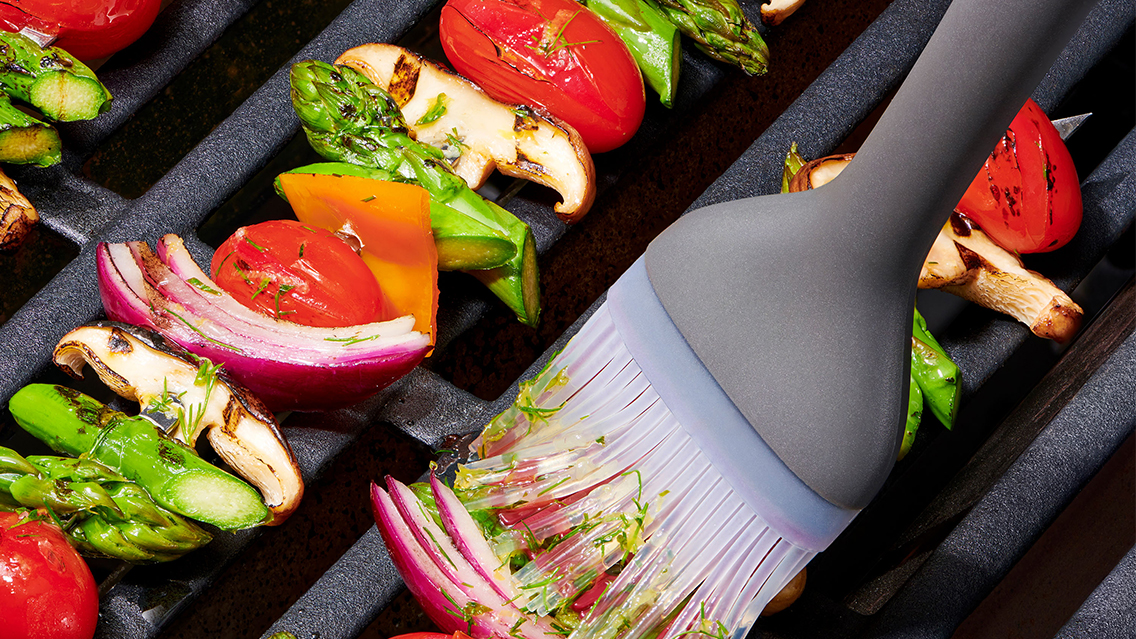
Vegetables
If you’re not grilling vegetables, you’re missing out on lots of charbroiled goodness. Here’s how to do it: Take some skewers and thread them with generous pieces of onion, bell pepper, zucchini, sweet potato or any other firm vegetable. Season with salt and pepper and grill until lightly charred all over.
Don’t have skewers? You can also put vegetables on a sheet pan and coat them with a simple marinade made with a few tablespoons of olive oil, a drizzle of balsamic vinegar, a bit of dijon mustard, and dashes of salt and pepper. After 30 minutes, grill the vegetables on a clean grate until charred.
Seafood
Grilling shellfish? One idea is to put seafood and veggies on the same skewer: Alternate between chunks of vegetables and marinated shrimp or scallops, and grill until the veggies are slightly charred and the seafood is firm. Using tongs, lift the skewers gently from the cooking surfaces.
A word of caution: When you’re grilling seafood or meat, make sure to avoid cross-contamination. Use a different cutting board and separate grilling tools for vegetables, meats, poultry, seafood and other types of ingredients, and use disposable paper towels if you need to wipe down the grates after cooking raw meat, poultry or seafood.
Creative Ingredients
Want to put sliced avocados on the grill? Go for it! Barbecue some tofu? You bet. Grill watermelon or lemons? You’re going to love ‘em. Grilled bacon? THE BEST. Grilled romaine lettuce? Perfect for making a salad, especially a Caesar.
There are plenty of unique grilling ideas to try. Just place your ingredient on a clean grill grate and cook it until it’s evenly charred. If you’re worried the food might stick, brush the grate with olive oil or use an oil like canola if you’d prefer a flavorless option.
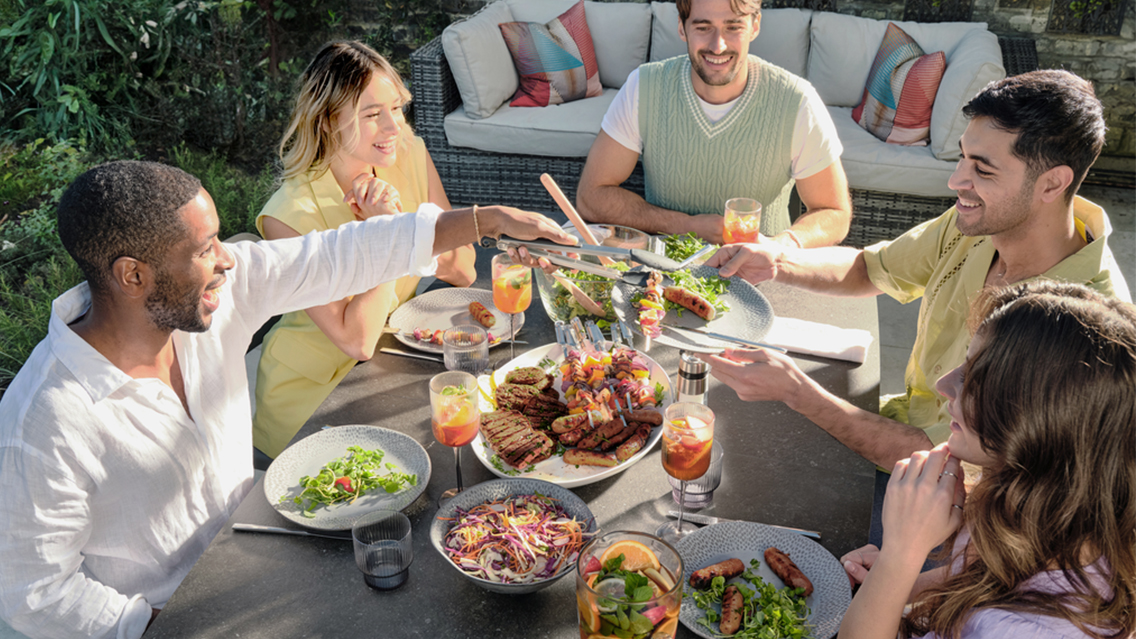
How to Play it Safe: Grilling Safety Tips
Now that you know how to grill, you’re just about ready to get started. But please keep these safety tips in mind at all times:
- Check your grill at the start of the season Make certain that the gas connection is secure and that there are no damaged hoses or cracked barrels.
- Don’t set your grill up near a window or near items that can catch fire You don’t want smoke infiltrating the house, or branches or paper near the open flame.
- Never leave your grill unattended Sparks can float up and flames can flare. Stay close by whenever your grill is lit, so you can monitor the situation.
- Check your gas tank If you have a gas grill, make sure there’s no spillage or leaks. When you ignite the grill, be aware of any smell of gas escaping.
- Check your wire brush Loose bristles can stick to the griddle pan or grate and become enmeshed in your food. Replace any brushes with loose wires.
- Pay attention to apron strings and hand towels Make sure no loose items are near the open flame.
- Keep your lid handy If there’s a flare-up, don’t spray it with water. Instead, reduce the amount of air feeding the flames by covering your grill and letting it calm down.
Ready to go? It’s time to get out there and start grilling, all season (or even all year) long.


